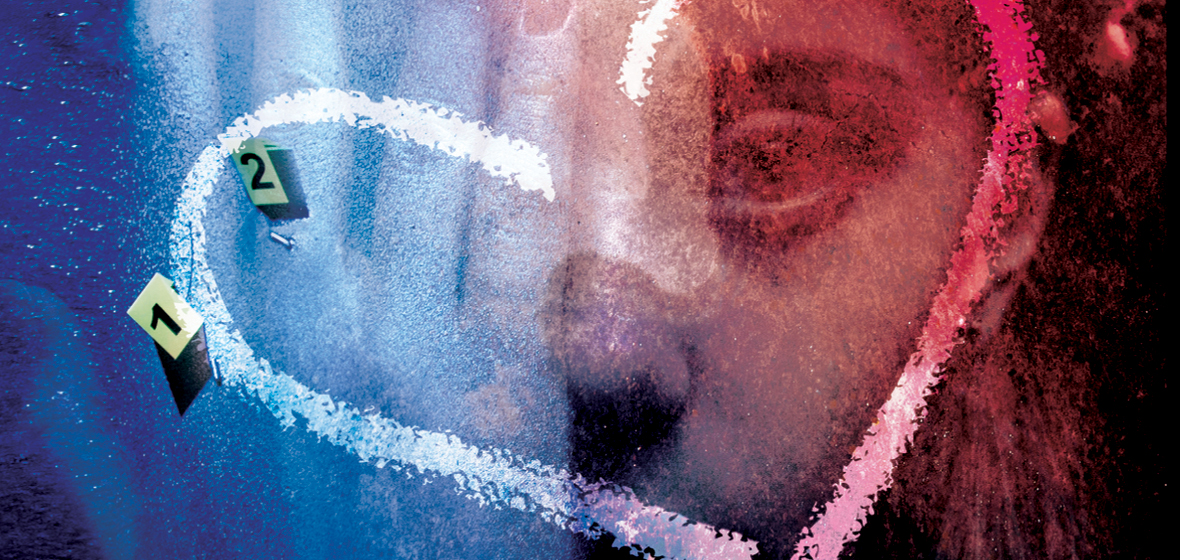When you are at university doing journalism 101, you don’t think about the sort of stuff you are signing up for, and that there could be this exposure to dead bodies and crime scenes.
In March this year, an Australian journalist won the world’s first damages claim for vicarious trauma from witnessing and reporting on police work and court cases. In an exclusive interview, LSJ speaks to the journalist at the centre of the case and asks the question: will the decision set a precedent for traumatised lawyers to claim against their employers?
Sarah* cannot remember who was standing trial on what became her last day as a court reporter. “When I finally cracked, I was sitting in a murder trial, but I couldn’t even tell you which case it was,” the former journalist from The Age recalls. “The evidence wasn’t particularly bad. I just started shaking and sweating. I walked out of the courtroom and called my editor to say get me off this round, I can’t do this anymore.”
Shortly afterwards, Sarah took a voluntary redundancy and left journalism after a 10-year career.
“I had a job that I had loved, and I felt so lucky to work for a metropolitan newspaper, but eventually I just had to throw my hands in the air and say it wasn’t worth it, the impact it was having on me. They were not listening to me and I had to take care of myself.”
That phone call, made in a hallway of the Victorian Supreme Court in 2013, was not the first time Sarah had pleaded with her editors for support.
Her pleas had fallen on deaf ears for so long that the whole traumatic experience culminated with a landmark decision in the Victorian County Court earlier this year. In a world-first, a journalist was awarded damages for their employer’s breach of duty of care to staff.
That journalist – whom we have called Sarah in this story but has been referred to as YZ in other media reports – claimed damages for post-traumatic stress disorder (PTSD) she suffered during her years as a court reporter. The Age was found to have breached its duty of care for Sarah’s psychological wellbeing. The breach was so significant, Judge Chris O’Neill found, that it caused Sarah to develop PTSD.
Newsrooms across Australia trembled as the decision came out – awarding Sarah $180,000 in damages for pain and suffering. The blistering judgment sent a message to media organisations accustomed to blooding young reporters on a diet of early morning or late-night crime scenes, and often distressing breaking news.
Legal experts now believe the landmark case has set a precedent for those in other professions, including law. If a journalist can be found to have been traumatised by violent and distressing material heard in court cases, why not a lawyer?

Lawyers and courtroom PTSD
Sarah’s lawyer, Bree Knoester, believes the judgment “has implications for any industry that exposes their employees to trauma, particularly in law”.
“There is conflict and a lot of distressing information across a number of areas of law, including criminal work, Royal Commissions, family law and other litigation,” Knoester says.
“This was a landmark decision in determining that newsrooms have an obligation to employees who are being exposed to traumatic content, and this finding is readily transferable to law. Courtrooms can expose people to incredibly traumatic content, and organisations may not be aware that the reason someone is late for work is because they have been at home crying and distressed about what they have heard.”
Research by the Australian Institute of Family Studies (AIFS) found criminal lawyers are at higher risk of experiencing vicarious trauma – particularly those who work predominantly in sexual assault and family violence cases. A 2003 study by US academics Levin and Greisberg of lawyers working in those two areas found they experienced rates of vicarious trauma and burnout at twice the rate of the control group, consisting of social services workers and mental health professionals. The researchers believed a lack of understanding by firms of the risks of secondary exposure to trauma, coupled with often excessive caseloads, could be behind the high prevalence in the legal profession.
While in the past, recommended strategies to cope with the impact of vicarious trauma included a range of self-care remedies, the AIFS study found relying solely on those methods is not helpful, and the focus should be on providing safer workplaces rather than attempting to reduce the effects of trauma once they have set in.
Psychologist Jackie Burke is a vicarious trauma specialist who has worked for more than 10 years assisting workplaces and individuals, including lawyers, as the head of Jackie Burke Psychology in Sydney. She says the common misconception about vicarious trauma is that “people think you have to be the first responder to experience it”.
“The only reliable predictor we have of vicarious trauma is that it is brought about by exposure to traumatic content,” says Burke. “That could be cleaning up, responding to or being in the place where the trauma happened, or being in touch with people who have suffered from trauma.
“It is a major issue for those in family law, as well as the Director of Public Prosecutions and organisations where there are a number of criminal matters and there is a lot of contact with families and individuals who have experienced trauma.”
Burke says workplaces, including law firms, can do a lot more to support their employees. “Vicarious trauma itself has been overlooked. We do not even yet have a full and robust response to or awareness of vicarious trauma, even in first responders,” she says.
“When an organisation puts into place an organisation-wide approach to mitigate those risks, we know it will reduce vicarious trauma and make the effects easier to manage. There is also a reduction in workplace attrition, unplanned absences from work, and an improvement in performance.
“Implementing a vicarious trauma program saves organisations money, but I don’t think they know that.”

‘Death all day, every day’
Sarah’s case put the issue of vicarious trauma in newsrooms on trial.
While mandatory counselling and debrief sessions for first responders like ambulance and police officers have become standard in recent times, it seems little has been done by news organisations to ensure the wellbeing of their journalists. Round-the-clock reporters are constantly exposed to instances of both physical and mental suffering. For those in the crime and court rounds, death is their daily business.
“So much that goes on in there, in newsrooms, is not normal,” Sarah says. “It’s just accepted, and it shouldn’t be. It’s a workplace. They can’t just destroy someone and not be held accountable.”
Sarah spent five days under cross-examination in the hearing against her former employer in 2018, reliving the years spent as a senior crime and court reporter, covering scores of murders, violent crimes and tragic accidents.
“For six years – all day, every day – I navigated my way across the state, covering murders, stabbings, fires, train crashes,” she says. “It was just death all day, every day.”
She covered the death of four-year-old Darcey Freeman, thrown from the Westgate Bridge by her father Arthur Phillip Freeman, Victoria’s Black Saturday bushfires, and the re-trial of Robert Farquharson, convicted of drowning his three boys in a dam. She also covered the trial of notorious gangland figure Carl Williams’ killer, which included graphic security camera footage showing the moment Williams was bashed to death.
When Sarah prepared a feature piece on the Freeman trial, she recalls being told by an editor that he would not run it because “that trial is so horrible, I don’t want to read a word on it”.
“I said, ‘Well try sitting there every single day of the trial,’” she recalls.
For six years – all day, every day – I navigated my way across the state, covering murders, stabbings, fires, train crashes. It was just death all day, every day.
SARAH*, FORMER JOURNALIST AT THE AGE
Short of a making a phone call to The Age’s Employee Assistance Program, where it could often take at least a week to secure an appointment, there was nowhere in the newsroom Sarah could turn to for help. Her symptoms – poor concentration, constantly rapid heart rate, crying at her desk, trouble sleeping and reliance on alcohol – worsened.
“I understood why nobody listened more to what I was saying. It wasn’t a priority,” she said. “It was a high-pressure environment to get a story out. I believe that everyone I approached wanted to do something about it – they just got busy.”
The Age has appealed the decision on three grounds: that the judge “failed to have proper regard to the need to respect the autonomy and privacy of employees” when identifying the scope and content of their required duty of care; that the determination The Age had breached its duty of care was not sufficiently established in the evidence; and that the judge failed to provide adequate reasons “for his conclusion that [The Age] had breached its duty of care”.
The appeal is likely to be heard later this year.
Trauma training: not just ‘nice to have’
Judge O’Neill found that the nature of the stories Sarah was asked to cover were “of such a traumatic, violent and disturbing nature that it would have been relatively obvious to a reasonable employer that the cumulative effect of that exposure would create the distinct risk of psychological injury in the nature of PTSD or a similar disorder”.
“Seeing bodies being removed, undertaking ‘intrusions’ upon families and neighbours and attending funerals brought with it distress and discomfort at such a level that it was no great leap of logic to conclude … that her distress would result in the development of a significant psychological injury,” he said.
“Despite her evidence that she was obviously distressed in the presence of editors at the news desk and other Age staff, rarely did anyone enquire as to her welfare.
“She did not receive any training over the period as a crime reporter about how to deal with death and tragedy, save for one day of a two-day training course. The second day of the course dealt with post-traumatic stress, but she was called out to attend a murder scene.”
 Cait McMahon
Cait McMahon
Journalism cadets are trained to be tough in the face of human suffering. Black humour becomes their currency, and training courses are usually dismissed as a tick-the-box exercise from Human Resources, says Cait McMahon, Asia Pacific Managing Director of the Dart Centre for Journalism and Trauma, which supports media organisations in their coverage of trauma, conflict and tragedy.
McMahon, who gave evidence as an expert witness in the case, believes the judgment provides “a roadmap” for newsrooms to improve and better extend a duty of care to their journalists, particularly those responsible for daily court and crime reporting.
“When you are at university doing journalism 101, you don’t think about the sort of stuff you are signing up for, and that there could be this exposure to dead bodies and crime scenes,” McMahon says.
“Working journalists are now talking more about this [exposure to trauma] and hopefully their organisations will reciprocate.
“Trauma training is seen as a ‘nice to have’, and newsroom resources are so lean and mean that when trying to cut costs … the training we are able to provide is few and far between.”
Sarah describes the court process as “brutal and something I would not wish on anybody”, but hopes its legacy will be an improved duty of care to young reporters entering newsrooms under strain from staff cuts and an insatiable 24-hour news cycle.
“I still suffer the consequences of what I endured at work and the impact it had on me,” she says.
“I am concerned for the younger reporters. No-one is looking after them, and there are even less resources now from when I was there. I don’t want someone else to have to go through what I went through.”




